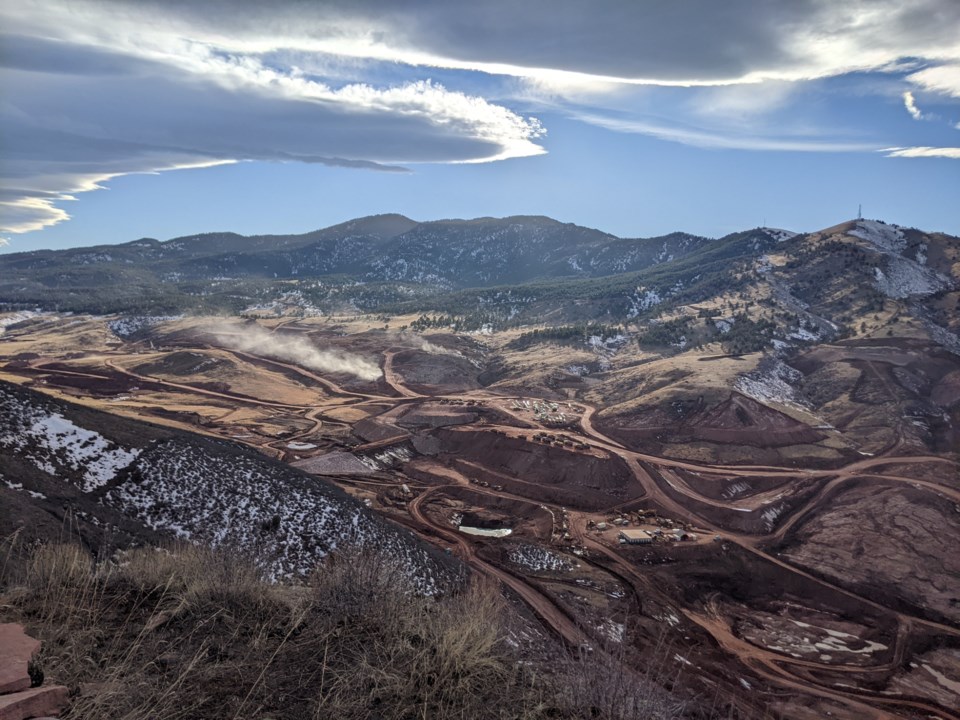The metaphor Northern Water’s general manager used to set the tone for the Spring Water Users Meeting was a math problem: how to make one plus one equal three.
General Manager Brad Wind explained that there is a gap between water supply and water demand. The big question is how to make that equation work.
“We gotta — in every one of our actions — force this to be true in everything we do, leverage all of our decisions to make sure we’re making wiser (choices) and more use out of water moving forward,” Wind said.
Over 300 people attended the conference hosted by Northern Water on Wednesday in Loveland, representing water interests across northeastern Colorado. Northern Water provides water to over a million people in 33 water districts and municipalities, including Longmont and Broomfield.
That water comes from the Colorado and South Platte river basins, which are not seeing great outlooks for the upcoming water year. The situation isn’t dire, but it isn’t great either, according to analysis by experts with the Colorado Division of Water Resources and Northern Water.
Colorado Water Division One Engineer Corey DeAngelis explained that 2021 was a dry year, leaving soil in Colorado with little to no moisture. Dry soils mean yields from this winter’s snowpack, which is sitting below average in the Colorado Headwaters and South Platte basins, will likely be lower since the ground will absorb more of the moisture.
River flows are expected to be below average again this year, and DeAngelis expects a below average overall water year for the two basins.
“How far below? I’m not sure,” he said. “I’m an optimist. I’m still hopeful for a really wet spring and summer, but time will tell.”
Luke Shawcross, water resources department manager for Northern Water, concurred with DeAngelis, predicting water to be similar to 2021 — not great. Shawcross is expecting weather to be warm and dry, consistent with past years.
The good news is that water storage in reservoirs is above average, but the question becomes how much Northern Water should tap into that storage if things remain dry. Shawcross explained that while historical averages give some insight on water flows, it's impossible to predict exactly what will happen.
With that uncertainty in mind, five members of the Northern Water Board of Directors talked about what that means for those within Northern Water’s boundaries.
“If your organization is operating with the assumption that the project will yield in the next 50 years the same as it’s yielded in the past 50 years, I think that’s a precarious assumption,” said Dennis Yanchunas, one of three directors representing Boulder County. “There’s just too much evidence that things are changing.”
Jennifer Gimbel, one of three directors representing Larimer County, spoke about the uncertainties that climate change specifically has created and the need to begin work to adapt to that change.
“We have talked about a drought that has lasted nearly a quarter of a century,” Gimbel said. “Folks, it’s no longer a drought. It’s what scientists are calling aridification. This is our life and we have to adapt.”
Mike Applegate, president of the Northern Water board, emphasized that there are no guarantees for what the next year will look like. He explained that Northern Water cannot fix the problem of water supply versus demand without the help of the municipalities and water districts.
“I think I want to impart a sense of urgency to all of us to really start getting … serious about finding the political will to do something about it,” Applegate said.
Northern Water highlighted efforts to boost the water supply for the district, namely the Chimney Hollow Reservoir that broke ground last year and will provide additional water storage benefitting a number of entities including Longmont and Broomfield.
However, the directors emphasized that work is also going to have to come from those developing and creating more water demand.
“If we look at what is projected for the Front Range, you’re going to eventually have to face the fact that the demand side of the equation is going to have to be worked on if we’re going to balance that supply and demand,” Yanchunas said.
He added that Northern Water wants to partner with municipalities and water districts to help manage that demand.
Despite the pessimistic water forecasts, the directors also agreed that it will be possible to find that solution to managing water supplies in a changing world through strong partnerships, as long as there are ongoing efforts to understand these challenges and the will to take them seriously.
“I’m going to go home tonight and pray for rain,” added John Rusch, the director representing Morgan and Washington counties.



